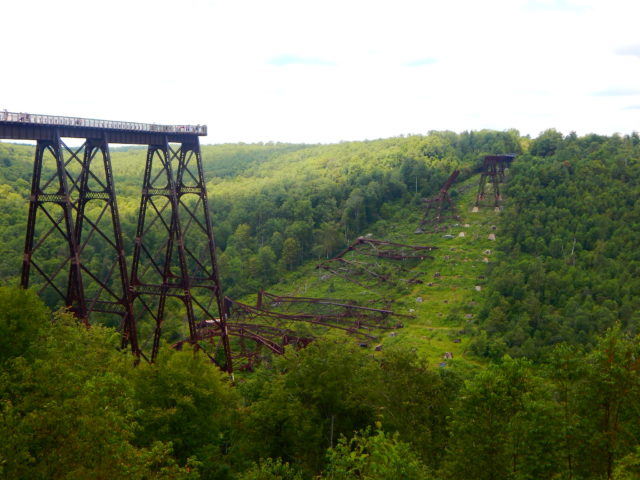At the end of the 19th century, the United States needed to transport coal and oil between Bradford, PA, to Elk County, Kansas, which was where the coalfields were located.
Since the Kinzua Valley is located between these two places, it was deemed necessary to organize the construction of a bridge. The alternative was an extra eight miles of railway over rough terrain, and a bridge was seen as the better option.
Octave Chanut was chosen to design the viaduct. The Phoenix Iron and Steel Works, which produced iron pipes, was responsible for the construction itself.
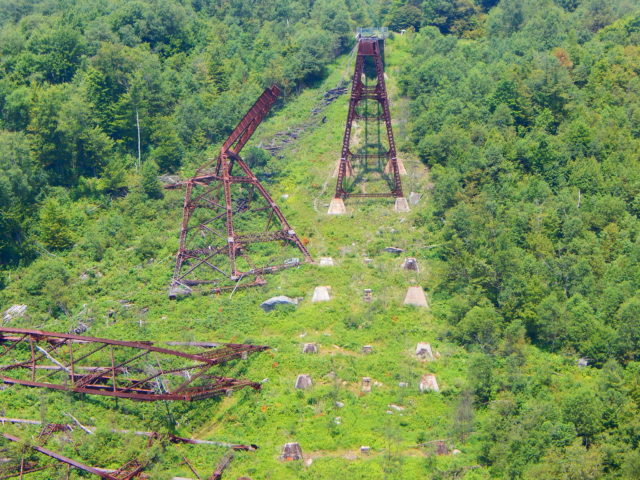
A team of 40 people worked on the project which lasted from May to August 1882 – just 94 working days. A total of 1,408 tons of wrought iron were used in constructing this magnificent structure.
The dimensions of the bridge were impressive: the base of the tallest tower had a width of 193 feet, while the height of the bridge itself was 301 feet and the length was an incredible 2,053 feet. When completed, the bridge could withstand a load of 241 tons.
Such dimensions and measurements resulted in Kinzua Bridge becoming the highest and longest railway bridge in the world for a while. Kinzua Bridge was also declared by some to be the Eighth Wonder of the World.
Sightseeing trains from places as far away as Buffalo, New York and Pittsburgh followed a route that would take them across the Kinzua Bridge.
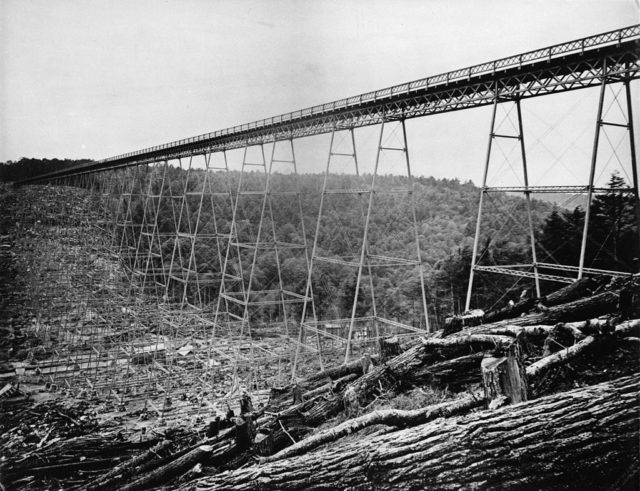
The bridge support consisted of 20 towers, six of which were taller than the Brooklyn Bridge. A speed limit of five miles per hour (eight kilometers per hour) was set for trains crossing the bridge, as the engine fluctuations or the wind could cause unsettling vibrations throughout the structure.
In France, in 1884, the Garabit viaduct was built, which reached a height of 401 feet, stealing the record as the highest bridge in the world from the Kinzua Bridge.
In 1893, the company owning the bridge went bankrupt. Consequently, they merged with the Erie Railroad which became the new owner of this landmark.
At the beginning of the 20th century, the bridge faced a problem related to the loads going over it. New locomotives were being built almost 80 percent heavier than they were before.
Allowing such trains to cross the Kinzua Bridge became unsafe, and the last traffic on the bridge was May 14, 1900.
On May 24, 1900, reconstruction work began. Between 100 to 150 workers labored ten hours a day for four months, with work progressing from either end of the viaduct at once.
The bridge was rebuilt from more durable steel, which allowed the structure to support greater loads, such as heavy freight trains, which ran until the end of 1959.
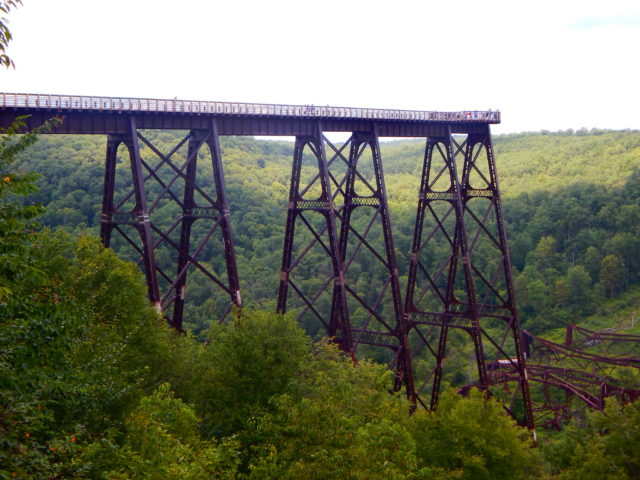
Big Boy, one of the largest trains in the world, weighing 464 tons, once passed along the Kinzua Bridge. Yet even after its reconstruction, the bridge maintained a speed limit of five miles per hour. Generally, it was light tourist trains that crossed the bridge.
The viaduct was last used by the Erie Railroad in June 1959. In 1963, Erie sold the bridge to the state of Pennsylvania for $50,000.
Governor William Scranton signed a law that purchased both the bridge and nearby land (a total of 316 acres) so it could be turned into a state park.
Kinzua Bridge State Park opened to the public in 1970. To improve access to this piece of history, in 1974, parking, toilets, and facilities offering drinking water were added to the park.
A fence on the bridge deck was also constructed to make it safer for visitors.
All these changes resulted in an official opening ceremony that took place on July 5, 1975. Two years later, the Kinzua Bridge was listed on the National Register of Historic Monuments.
Some studies that were carried out indicated that the bridge was susceptible to strong winds. Winds of sufficient strength could shift the center of gravity of the bridge onto one side only, running the risk that it might collapse. As such, it was deemed that essential repair work should be carried out, and this started in February 2002.
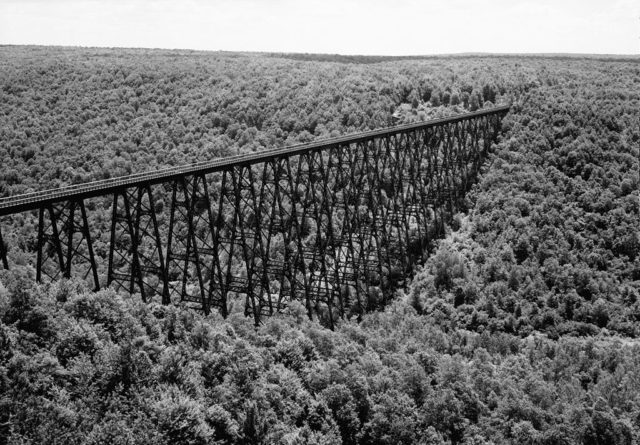
On July 21, 2003, restoration work was still ongoing, but a terrible event was about to occur. On that date, a tornado within a storm system hit the bridge with winds recorded at a speed of 94 miles per hour.
Due to badly rusted bolts, the tornado caused lasting damage to the bridge. Towers 4 to 9, as well as Towers 10 and 11, collapsed completely.
Amazingly, Towers 12 to 14 were actually lifted off their foundations and moved slightly northwest before being set back down, fully intact. It is believed that they were held together by the railway tracks. However, in the final moments of the storm, Towers 12 to 14 also collapsed.
It took about 30 seconds for the bridge to collapse, with some sections falling to the ground intact.
On July 21, 2004, Kinzua Bridge was removed from the National Register of Historic Places. The devastation caused by the tornado meant that the restoration work needed on the bridge would cost $45 million.
The state of Pennsylvania decided that it would be better to leave everything as it is and to repair the remaining towers that had survived.
In June 2005, the state began to plan the construction of a new park and decided to allocate funding of $700,000.
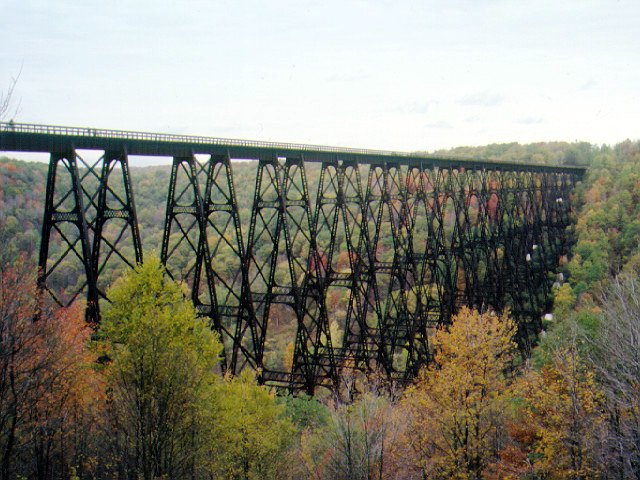
The Pennsylvania Department of Conservation and Natural Resources offered to carry out work that would enable people to access the bridge as well as providing a walking trail that offered visitors the chance to view the fallen towers.
In 2009, work began on the construction of a center for visitors and a pedestrian walkway, and 329 acres of Pennsylvania State Park now constitute the Kinzua Sky Walk.
The Sky Walk provides a walk along the remaining structure to an observation deck with a glass floor. Those brave enough to look through the glass will see both the bridge and the valley below.
The official opening took place on September 15, 2011. Construction costs amounted to $4.3 million, but it is estimated that tourism at this site now brings in about $11.5 million, so it was money well-spent.
With picnic spots and amazing scenic views, this has become a popular tourist attraction.
On July 1, 2016, a visitor center and a park office were opened near the bridge. Here you will find a reception, souvenir shop, and interactive exhibitions on the environment, nature, and history of this place.
Before visiting, it is wise to contact the office and clarify the opening hours. You should also contact the park if you’re interested in taking part in the various programs and excursions they run.
Check out Mark Moss’s fantastic Flickr page
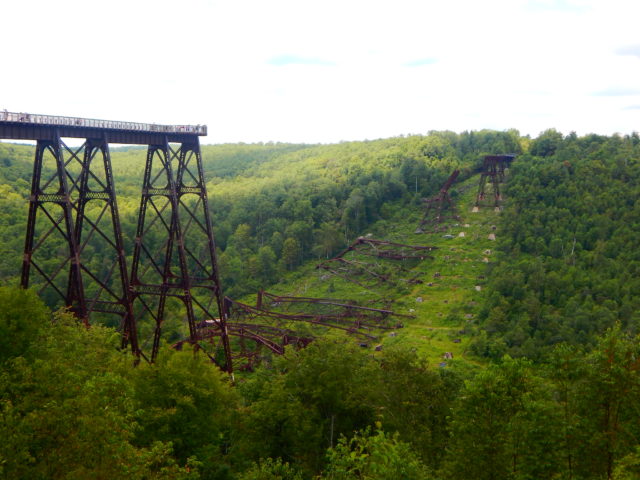
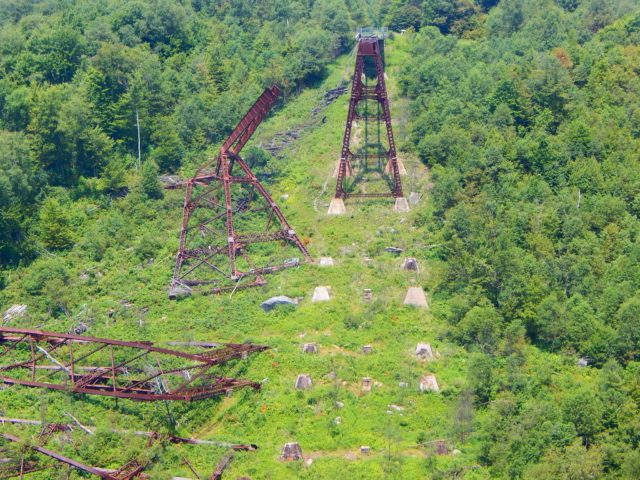
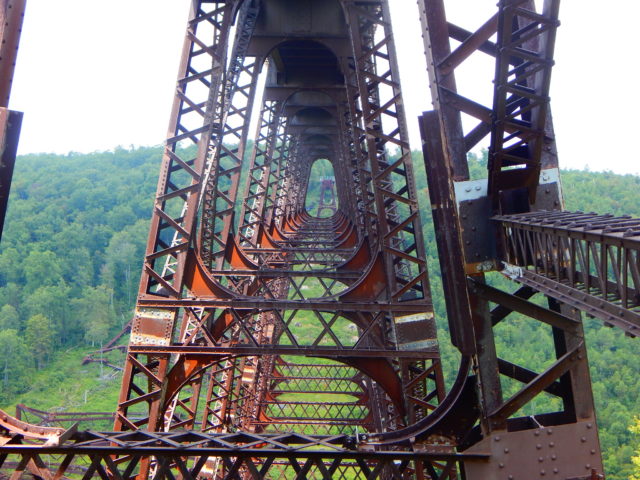
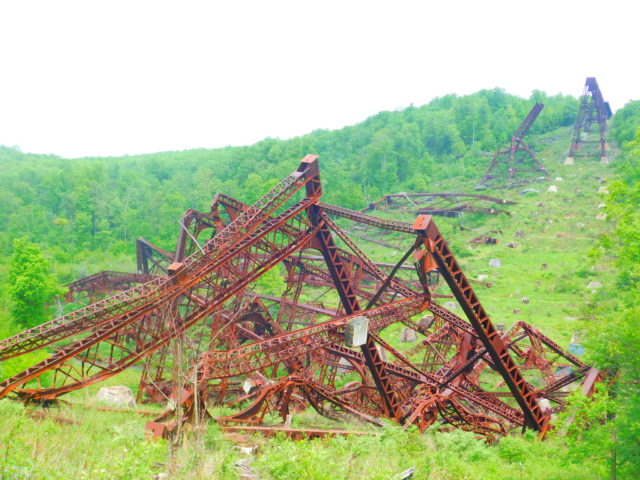
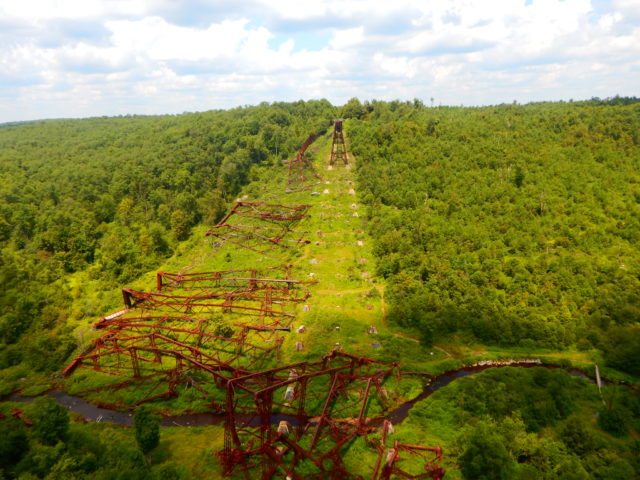
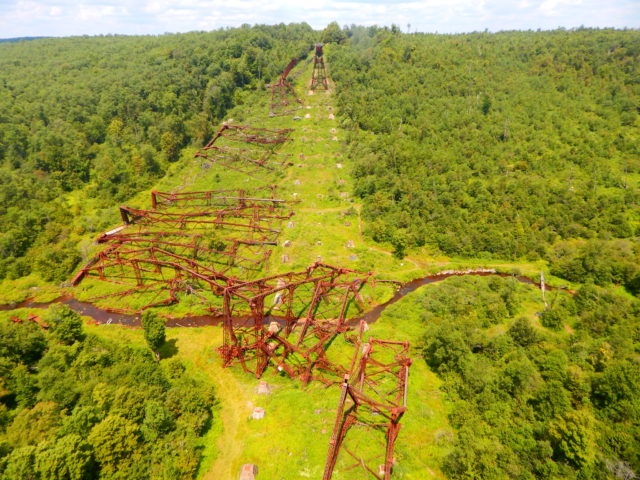
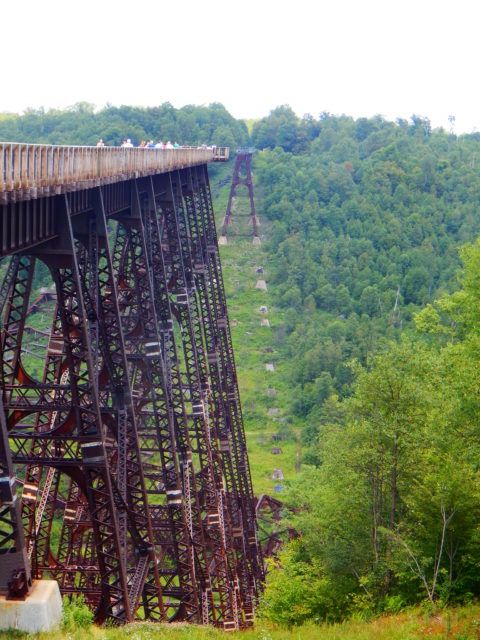
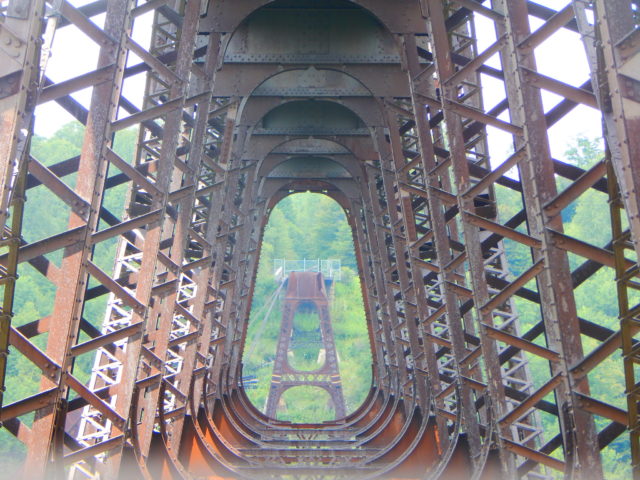
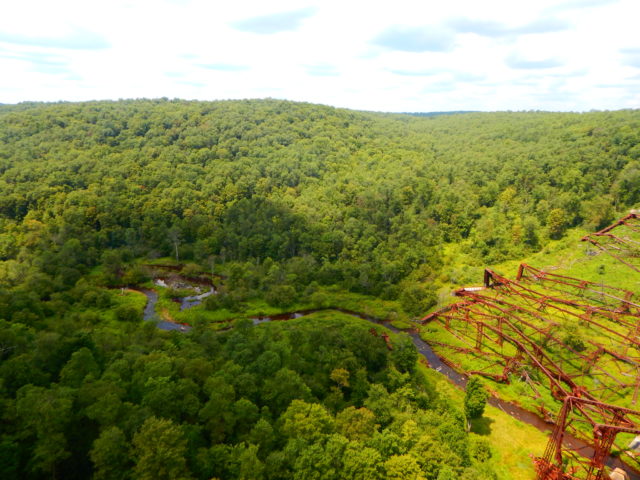
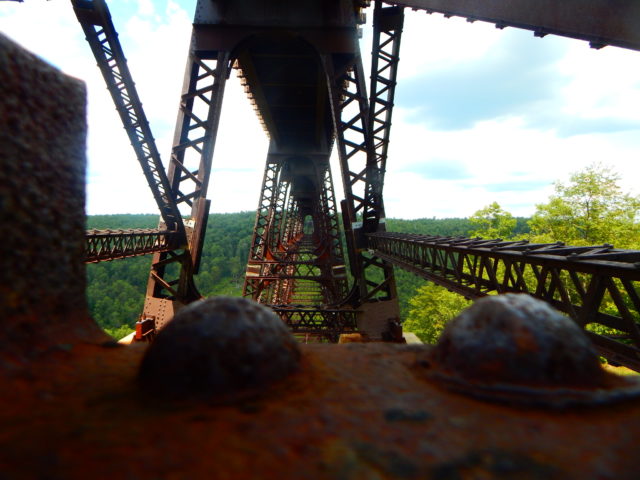
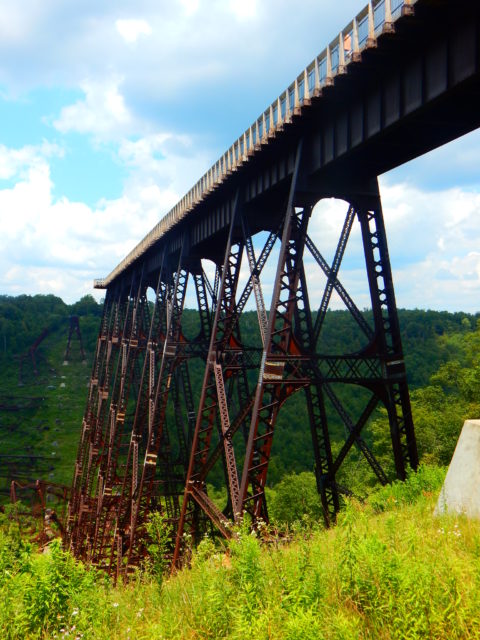
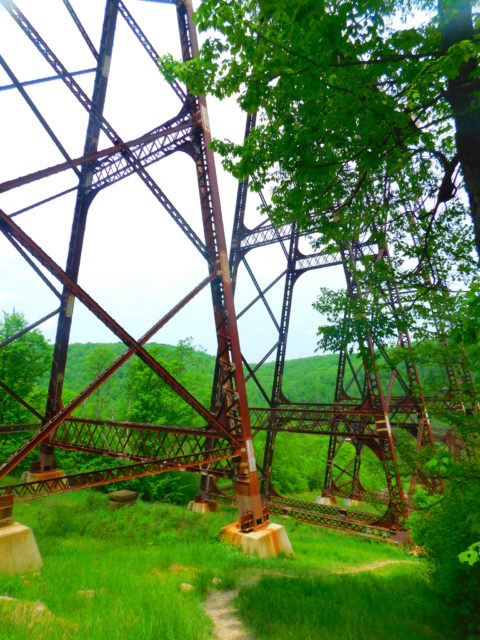
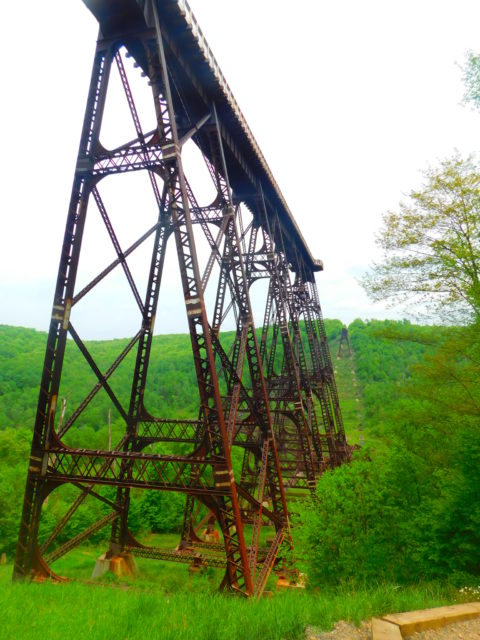

Another Article From Us: Two Guns – Ghost Town in Arizona

